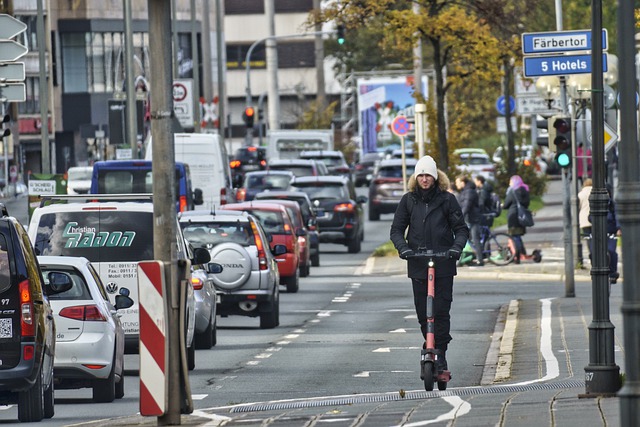
Table of Contents
Cycling on the Pavement: What are the Rules?
It’s not always the case that you’ll know whether cycling on the pavement is legal or not. however, it isn’t always difficult for your average biker to figure out.

In fact, it’s not even obvious to those who are familiar with the regulations.
Most bicycle commuting accidents occur when people are on footpaths, which is all too simple with them being busy and people sharing a few feet.
It’s vital that the regulations are followed to ensure that all road and pavement users are safe, given recent high-profile incidents involving pedestrians being struck by bicycles.
Cycling on the pavement
Cycling on the pavement is generally frowned upon unless an abrupt disappearance of a formal cycle path occurs.
Section 72 of the Highway Act 1835, which was later incorporated into the County and Borough Highways Act 1867, forbids “carriages of any sort” from using footpaths and causeways beside roads established or set aside for the use or accommodation of pedestrians.
Bicycles were defined in 1888 as “carriages,” which meant that they were not allowed to be ridden on footpaths or roadways intended for pedestrians.
Pedestrians don’t use sidewalks. According to the rule, the term can’t be used because it was created too recently.
Cyclists may find themselves in a legal bind as a result of this. However, the legal definition is that pavements are considered pedestrian walkways, thus cyclists should not ride on the surface. In the UK, e-scooters are not permitted to be utilized on sidewalks.
Although it’s true that many of us were unaware of this, the Highway Code is quite clear on the matter: “You MUST NOT cycle on a pavement.” This is stated more firmly in Rule 64, which reads, “You MUST NOT bicycle on a road.”
The Highway Code also advises road users to “use appropriate caution when passing pedestrians, especially children, older or disabled people” and “allow them space.”
Responsible cyclists
In 1999, the government made riding on the street a ticketable offense. “The creation of the fine penalty isn’t targeted at rational cyclists who are sometimes compelled to use the pavement out of fear of traffic and who show consideration for other pavement users,” said officials at the time.
Many cyclists, particularly children and young people, are afraid to cycle on the road, according to senior police officials who oversee enforcement. Police sensitivity and cautious utilization of discretion are required.
Cyclists riding on the roadways may be fined up to £500. However, this regulation is not always enforced by many law enforcement agencies. When a fine is actually levied, cyclists are usually charged around £50.
In 2014, cycling minister Robert Goodwill stated that police should exercise their judgment when it comes to charging cyclists on the road. Police officers will generally avoid fining cyclists if they are observed to be considerate of other road users while on the pavement, but in most circumstances, they will rather point out the hazards of cycling on the sidewalk – both to them and pedestrians.
Why do cyclists choose the pavement?
In most cases, pavement cycling is motivated by road traffic. Some cyclists may be frightened if there are a lot of automobiles on the road and choose to ride on the sidewalk instead.
Although many parents ride with their youngsters, they may also opt to use the pavement for safety. However, it is also unlawful for children to ride on the pavement – although there are no criminal liabilities for children under 10 years old.
Cyclists may encounter difficulties during their journeys, such as vehicles illegally parked or potholes, or other road surface issues. Cyclists could be at serious risk if they continue on the road or cycle path in instances like these.
However, certain police departments have been known to enforce laws on bikes on the road. As a result, it may be worth the expense for cyclists and their parents to follow traffic regulations.
Cycling Accident Claim
The concept of vulnerable road users applies to both cyclists and pedestrians. Pedestrians, on the other hand, are at a disadvantage owing to the higher speeds that cyclists may reach and the fact that they are riding bicycles. This can result in serious clashes between the two groups.
If you’ve been hurt in a motor vehicle accident with a bicycle on the roadway, you may be able to file a personal injury claim against the negligent party.
ICS provides a plethora of legal services, including workplace accidents, conveyancing, employment law, medical negligence, and road traffic incidents. Simply call us or fill out an online claim to find out how ICS can assist you.



